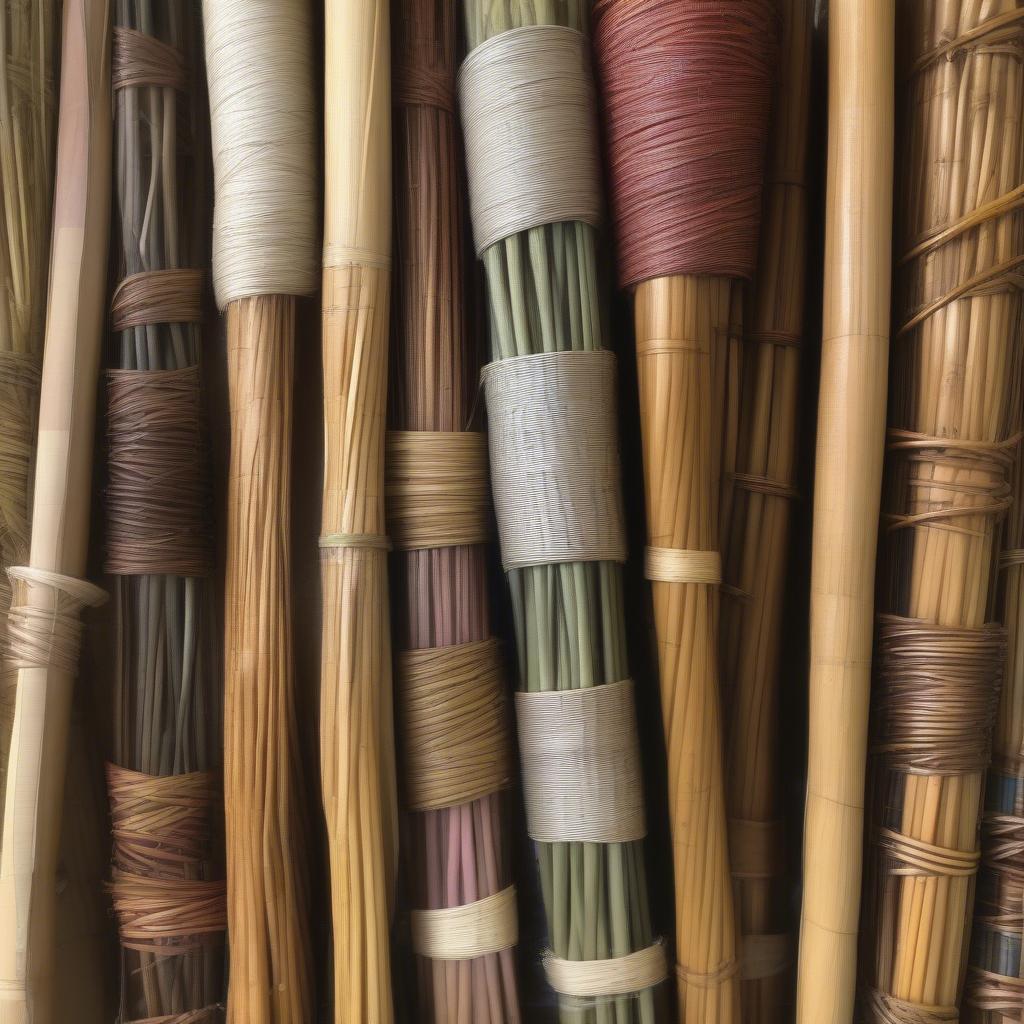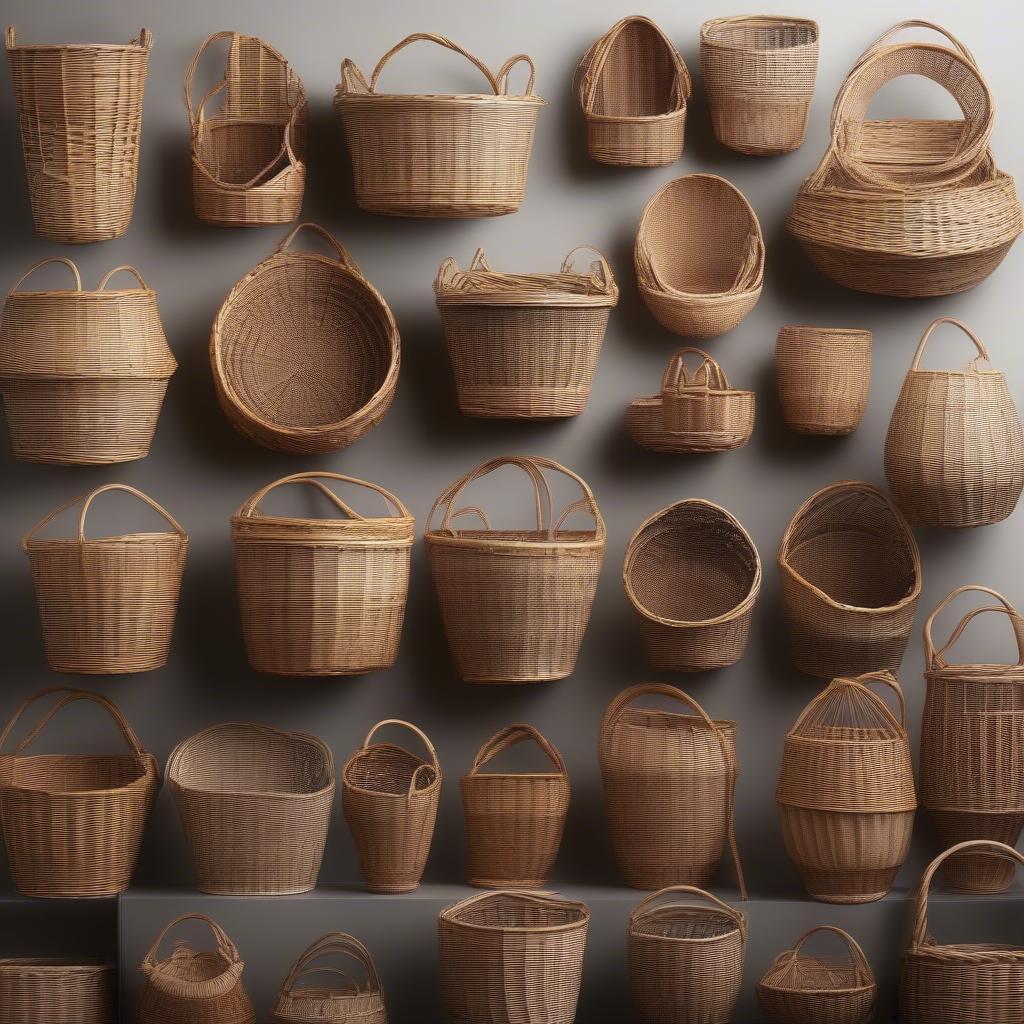Basket Weaving
Which Willow is Used in Basket Weaving?
Willow has been a staple material in basket weaving for centuries, prized for its flexibility and strength. But not all willows are created equal. Understanding which willow is best suited for basket weaving is crucial for creating beautiful and durable pieces. This article delves into the world of willow, exploring the specific types used in basket weaving and why they are preferred by artisans worldwide. After reading this, you’ll be able to select the right willow for your next art basket weaving project.
Decoding the Willow Family: Best Varieties for Basketry
Within the vast willow family (Salix), several species stand out for their exceptional basket-making qualities. These varieties offer the perfect balance of pliability and resilience, enabling weavers to create intricate designs that stand the test of time. Let’s explore some of the most popular choices:
- Salix viminalis (Common Osier): Renowned for its long, straight rods, this species is a cornerstone of basket weaving. Its rapid growth makes it a sustainable choice, and its flexibility allows for complex weaving patterns.
- Salix triandra (Almond Willow): This willow produces strong, slender rods with a beautiful reddish-brown hue, making it ideal for finer basketry and decorative elements.
- Salix purpurea (Purple Willow): The vibrant purple shoots of this willow add a touch of color to baskets, while its tough, flexible rods provide structural integrity.
- Salix alba ‘Caerulea’ (Cricket Bat Willow): Although primarily known for its use in cricket bats, this willow’s straight, strong wood also finds application in larger basketry projects.
These willows are chosen for their specific qualities, such as length, flexibility, and durability. Each species offers unique characteristics that influence the final product, allowing artisans to create diverse and stunning basketry.
Why Willow? The Benefits of this Natural Material
Why is willow such a popular choice for shopping basket weave? Its advantages are numerous, ranging from its sustainable nature to its aesthetic appeal. Here’s a closer look:
- Sustainability: Willow is a fast-growing, renewable resource, making it an environmentally friendly option for crafting.
- Flexibility: The pliable nature of willow rods allows for intricate weaving and shaping, enabling artisans to create a wide range of basket styles.
- Durability: When properly harvested and prepared, willow baskets are incredibly strong and long-lasting.
- Aesthetic Appeal: The natural beauty of willow, with its varying colors and textures, lends a rustic charm to any woven piece.
These benefits make willow a preferred choice for both novice and experienced basket weavers.
 Different Willow Varieties for Basket Weaving
Different Willow Varieties for Basket Weaving
Harvesting and Preparing Willow for Weaving
The journey of willow from a living tree to a woven basket involves careful harvesting and preparation.
- Harvesting: Willow is typically harvested during the dormant season, when the sap is down. This ensures the strongest and most flexible rods.
- Soaking: After harvesting, the willow rods are soaked in water to restore their flexibility and make them easier to work with.
- Drying: Once soaked, the rods are dried slowly to prevent cracking and splitting.
Properly prepared willow is key to creating high-quality, durable baskets.
Exploring Different Basket Weaving Techniques with Willow
Different basket weaving techniques utilize the unique properties of willow to create a variety of patterns and textures. These techniques range from simple twining to complex coiling and plaiting. Each method allows for a different level of detail and artistry, contributing to the rich tradition of basket weaving.
 Different Basket Weaving Techniques with Willow
Different Basket Weaving Techniques with Willow
Beyond Baskets: Other Uses of Willow
While basket weaving is the most common application of willow, its versatility extends beyond this traditional craft. Willow is also used in furniture making, sculpture, and even building materials. Its flexibility and strength make it a surprisingly adaptable material for a range of creative endeavors. You can find more examples on our mongolian basket weaving site.
What other materials can be used for basket weaving besides willow?
Many materials can be used for basket weaving, including reed used for basket weaving, pine needles, raffia, and even recycled plastic.
How can I tell if my willow is ready for weaving?
Willow is ready for weaving when it is flexible and pliable, without being brittle. A simple bend test can determine if the rods are ready to be worked with.
Conclusion: Choosing the Right Willow is Key
Choosing the correct willow is essential for successful basket weaving. By understanding the different varieties and their characteristics, you can select the perfect material for your next project. From the common osier to the colorful purple willow, each species offers unique properties that contribute to the beauty and durability of a finished basket. Which willow will you use for your next creation?
 Finished Willow Baskets
Finished Willow Baskets
FAQ
- Is willow easy to work with for beginners? Yes, willow is a great material for beginners due to its flexibility.
- Where can I buy willow for basket weaving? You can purchase willow from craft stores, online retailers, or directly from willow growers. Check out our basket weaving reed types image for more information.
- How long does a willow basket last? With proper care, a willow basket can last for many years, even decades.
- Can I grow my own willow for basket weaving? Yes, willow is relatively easy to grow and propagate.
- What is the best time of year to harvest willow? The dormant season, typically between late autumn and early spring, is the ideal time for harvesting willow.
- How do I store willow rods before weaving? Store willow rods in a cool, dry place, away from direct sunlight.
- What are some common basket weaving patterns for willow? Some common patterns include twining, plaiting, and coiling.
If you need further assistance, please contact us at Hanoi, Vietnam or Tech Avenue, Suite 12, San Francisco, CA 94105, USA. We have a 24/7 customer support team.
